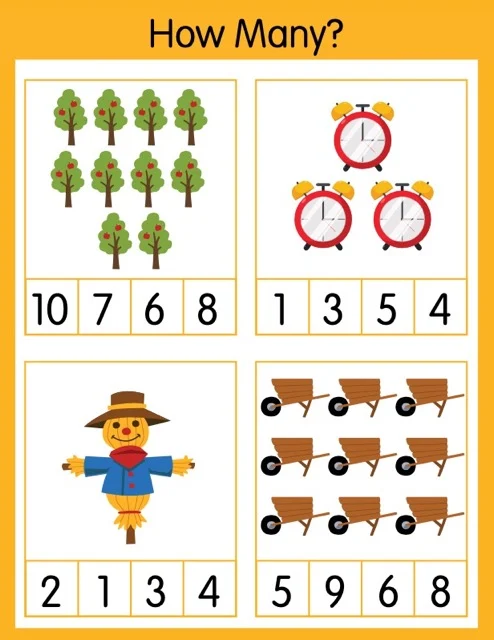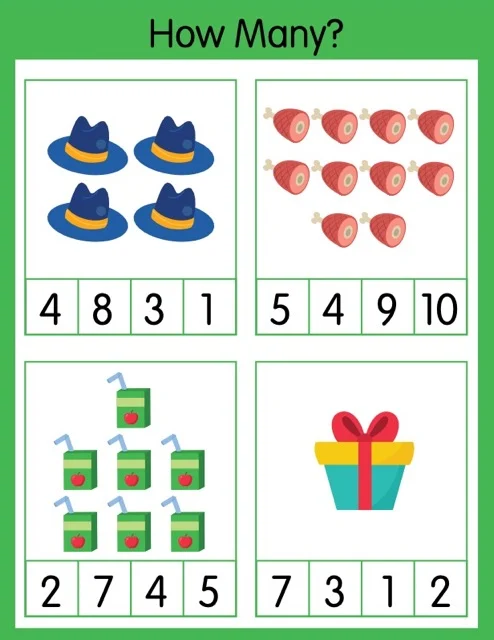Deciphering HowMany?: A Cryptographic Analysis
The provided text details the analysis of a cryptic code, dubbed "HowMany?", which incorporates numerical sequences, the repeated phrase "HowMany?", and non-numerical characters. Analysis focuses on identifying patterns and frequencies within the code to decipher its meaning through methods like frequency analysis and pattern recognition. The code's purpose, creator's intent, and potential connections to other puzzles remain unknown, presenting a significant cryptographic challenge. Researchers hope to uncover a hidden message by exploring various decryption techniques and gathering additional contextual information. The ultimate goal is to fully understand the code's meaning and the motivations behind its creation.
Deciphering the HowMany? Code
Briefing Document: The "HowMany?" Code
Subject: Analysis of the "HowMany?" Code
Date: 2023-10-26
Sources:
●
"Cracking the HowMany? Code: A Study Guide"
●
"Deciphering the HowMany? Code: FAQ"
●
"OMTEX CLASSES: How Many.pdf"
Summary:
The "HowMany?" code is a suspected substitution cipher featuring numerical sequences interspersed with the phrase "HowMany?" and a series of non-numerical characters. The primary goal is to decipher this code, uncovering the hidden message and potentially gaining insights into the code creator's intentions.
Key Observations:
1.
Numerical Patterns: The code primarily consists of numerical sequences, possibly representing words, with repeating numbers like 8, 13, and 15. This suggests a simple substitution cipher where each number corresponds to a letter.
2.
"HowMany?" Prompt: The repeated phrase "HowMany?" is a key element. It could be a direct question about the quantity of specific elements within the code, a clue hinting at a counting-based encoding method, or a misdirection tactic.
" 'HowMany?' could be a direct question asking for the quantity of something within the code, or it could be a clue hinting at an encoding method involving counting or quantities." - "Cracking the HowMany? Code"
1.
Non-Numerical Characters: The code also includes seemingly unrelated characters: "BEBR," "PRRRR," "RRP," and "ไนนไวไนไข". These could be part of a separate code, intentional distractions, or clues to the code's origin or meaning.
Potential Decryption Methods:
●
Frequency Analysis: Analyzing the frequency of numbers in the code and comparing it to the frequency of letters in the English language could help identify potential letter-number pairings.
"Frequency analysis is important in deciphering substitution ciphers because it helps identify potential matches between the frequency of numbers in the code and the frequency of letters in the language the message is written in." - "Cracking the HowMany? Code"
●
Pattern Recognition: Identifying repeating number groups within the code might reveal common words or phrases, providing a starting point for further decryption.
●
Substitution: Based on frequency analysis and pattern recognition, educated guesses can be made for letter-number substitutions, and these can be tested against the code.
Potential Implications:
●
Hidden Message: Deciphering the code could reveal a hidden message containing instructions, personal communication, or valuable information.
●
Code Creator's Intentions: Understanding the message could provide insights into the purpose behind the code and the code creator's motivations.
●
Connection to Other Puzzles: The "HowMany?" code could be part of a larger puzzle or series of challenges, and deciphering it might unlock further stages.
Challenges and Next Steps:
●
Limited Context: Lack of information about the code's origin, intended recipient, and related clues hinders the decryption process. Further research into the context is crucial.
●
Ambiguity of Non-Numerical Characters: Determining the role and potential meaning of the non-numerical characters is essential for a complete understanding of the code.
●
Testing and Refinement: Continuous testing and refinement of decryption methods based on new discoveries and insights are vital.
Conclusion:
The "HowMany?" code presents a compelling cryptographic challenge. Through careful analysis, application of decryption techniques, and a diligent search for contextual clues, it may be possible to crack the code, revealing the hidden message and shedding light on its purpose and creator.
Deciphering the HowMany? Code
FAQ: Analyzing the "HowMany?" Code
1. What is the "HowMany?" code?
The "HowMany?" code appears to be a simple substitution cipher where numbers represent letters. The provided excerpts show several lines of these numerical sequences interspersed with the phrase "HowMany?" and some seemingly unrelated characters.
2. What patterns can be observed in the code?
Several patterns emerge:
●
Repetition: Certain numbers, like 8, 13, and 15, appear frequently within the sequences.
●
Grouping: Numbers are often grouped together, potentially representing words.
●
"HowMany?" prompt: The consistent use of "HowMany?" suggests a question related to the quantity of something within the code.
3. What could the numbers represent?
The numbers likely represent letters, forming words or phrases when decoded. The frequency of some numbers suggests they might correspond to common letters in the English language (like E, T, A, O, I).
4. What about the non-numerical characters?
The non-numerical characters like "BEBR," "PRRRR," "RRP," and "ไนนไวไนไข" are intriguing. They might be:
●
Part of a separate code: Potentially encoded using a different method.
●
Distractions: Intentionally added to confuse or mislead.
●
Clues: Holding a hidden meaning or hinting at the code's origin.
5. What are potential methods for deciphering the code?
Several methods could be employed:
●
Frequency analysis: Analyzing the frequency of each number to match them with the most common letters in the English language.
●
Pattern recognition: Looking for repeated number groups that might represent common words.
●
Substitution: Trying different letter assignments based on educated guesses and contextual clues.
6. What is the significance of the "HowMany?" prompt?
The question "HowMany?" could be interpreted in several ways:
●
Direct question: It might be asking for the number of words, letters, or a specific element within the encoded message.
●
Clue to the code: "How many" could hint at the encoding method itself, possibly involving counting or quantities.
●
Misdirection: It could be a red herring designed to distract from the real purpose of the code.
7. What additional information is needed to crack the code?
More context is crucial. Knowing the origin of the code, its intended recipient, or any related clues could provide valuable insights for decryption.
8. What are the potential implications of deciphering the "HowMany?" code?
Deciphering the code could reveal:
●
A hidden message: It might contain instructions, information, or a personal communication.
●
The code creator's intentions: Understanding the purpose behind the code.
●
A connection to other ciphers or puzzles: The code might be part of a larger puzzle or series.
Cracking the HowMany? Code
Cracking the "HowMany?" Code: A Study Guide
Short Answer Quiz
Instructions: Answer the following questions in 2-3 sentences each.
1.
What is the primary pattern observed in the "HowMany?" code excerpts?
2.
What does the frequent appearance of certain numbers in the code suggest?
3.
What are two possible interpretations of the "HowMany?" prompt?
4.
Why are the non-numerical characters in the code particularly interesting?
5.
Describe two different methods that could be used to decipher the "HowMany?" code.
6.
Explain the importance of frequency analysis in deciphering substitution ciphers.
7.
Why might considering the context of the code's origin be helpful in breaking it?
8.
What are two potential implications of successfully deciphering the "HowMany?" code?
9.
Why is pattern recognition a potentially useful technique for analyzing the code?
10.
If the "HowMany?" prompt is a clue, what might it suggest about the encoding method?
Short Answer Quiz Answer Key
1.
The primary pattern observed is numerical sequences grouped together, likely representing words, and interspersed with the phrase "HowMany?".
2.
The frequent appearance of certain numbers suggests they represent common letters in the English language based on letter frequency analysis.
3.
"HowMany?" could be a direct question asking for the quantity of something within the code, or it could be a clue hinting at an encoding method involving counting or quantities.
4.
The non-numerical characters are intriguing because they could be part of a separate code, intentional distractions, or clues holding a hidden meaning or hinting at the code's origin.
5.
Two methods for deciphering the code are frequency analysis, analyzing the frequency of numbers to match them with common letters, and substitution, trying different letter assignments based on educated guesses and contextual clues.
6.
Frequency analysis is important in deciphering substitution ciphers because it helps identify potential matches between the frequency of numbers in the code and the frequency of letters in the language the message is written in.
7.
The context of the code's origin could help determine the language used, the potential recipient, the time period it was created in, and any historical events or personal details relevant to the code creator, providing valuable insights for decryption.
8.
Successfully deciphering the code could reveal a hidden message, such as instructions or a personal communication, or provide insights into the code creator's intentions and the purpose behind the code.
9.
Pattern recognition is useful because it could help identify repeated number groups that might represent common words or phrases, providing a starting point for deciphering the rest of the code.
10.
If the "HowMany?" prompt is a clue, it suggests that the encoding method might involve counting the occurrences of specific elements within the code, such as the number of times a particular number or group of numbers appears.
Essay Questions
1.
Analyze the potential significance of the "HowMany?" prompt in understanding the structure and purpose of the code. Consider both its literal meaning and its potential use as a symbolic or metaphorical clue.
2.
Critically evaluate the various methods that could be employed to decipher the "HowMany?" code, discussing their strengths, limitations, and potential for success. Justify your preferred approach and explain why it is most likely to yield accurate results.
3.
Drawing upon the provided excerpts and your knowledge of cryptography, explore the possible nature and purpose of the non-numerical characters present in the "HowMany?" code. Develop and defend a hypothesis regarding their role in the overall message or encryption scheme.
4.
Assuming the "HowMany?" code is successfully deciphered, what types of information or insights could it potentially reveal? Discuss the range of possibilities, considering both mundane and significant outcomes, and their implications for understanding the code's creator and their intentions.
5.
Imagine you are tasked with creating a continuation of the "HowMany?" code, adding your own layer of encryption or complexity. Describe the techniques you would employ, explaining how they build upon or deviate from the patterns and principles observed in the original excerpts.
Glossary of Key Terms





























